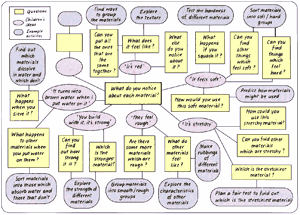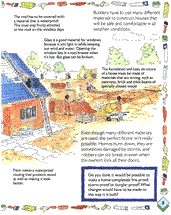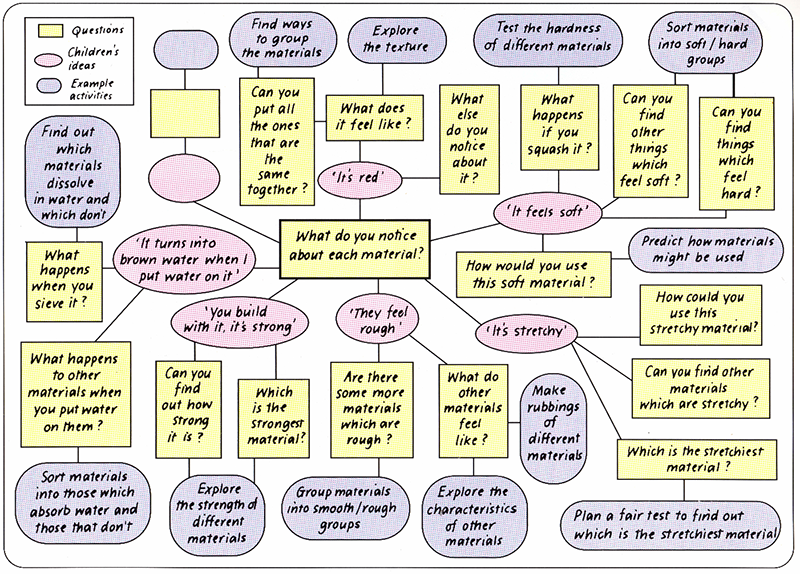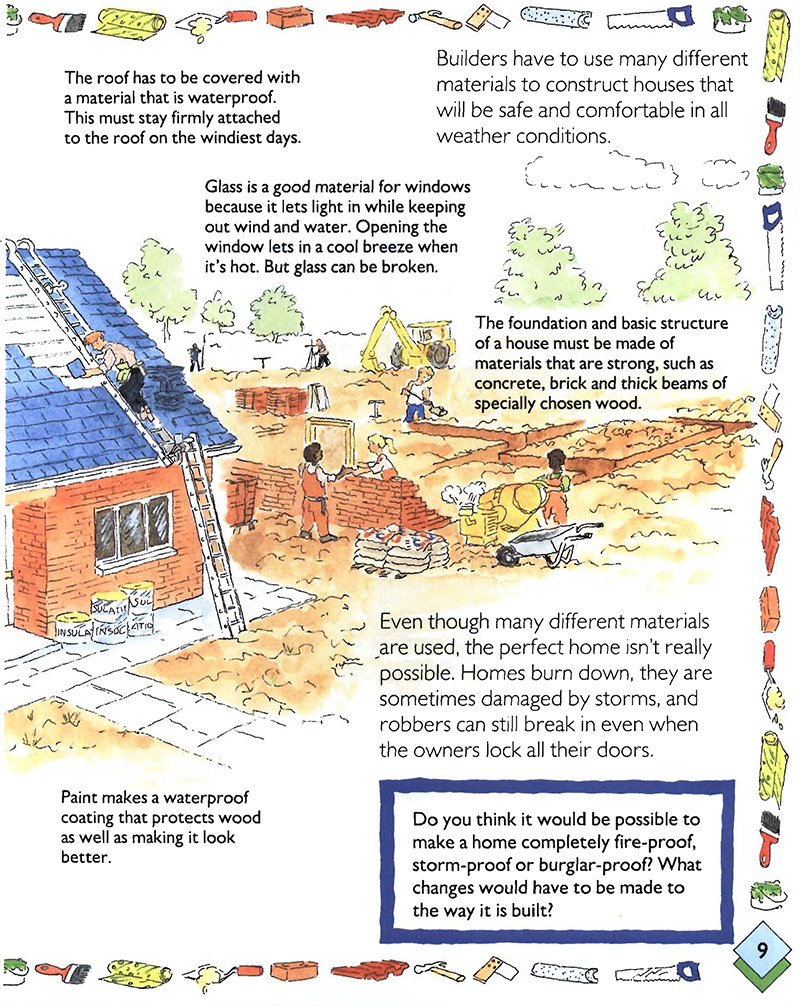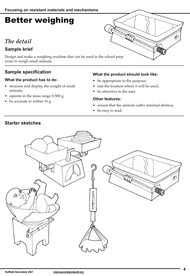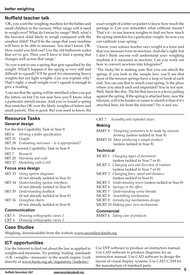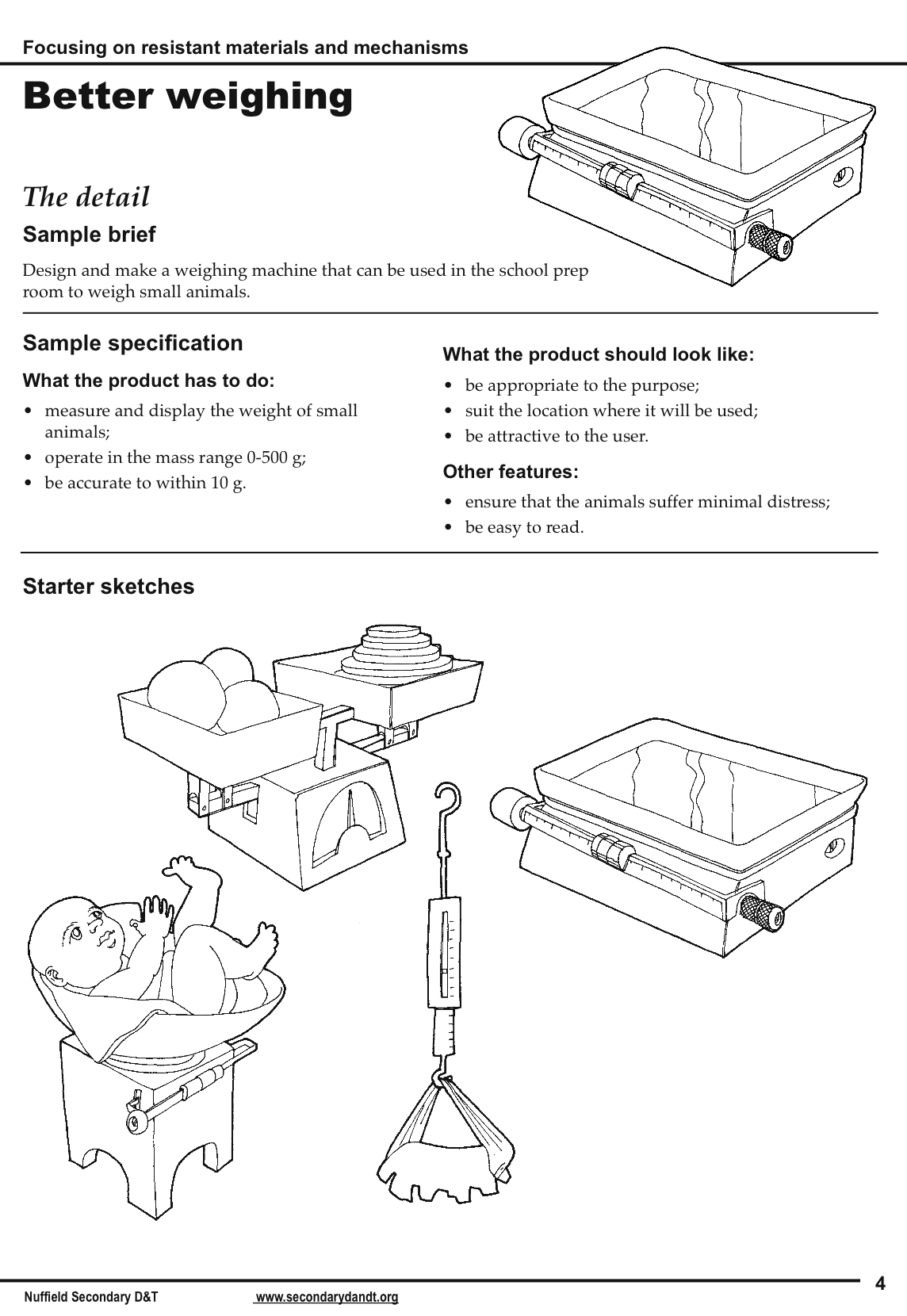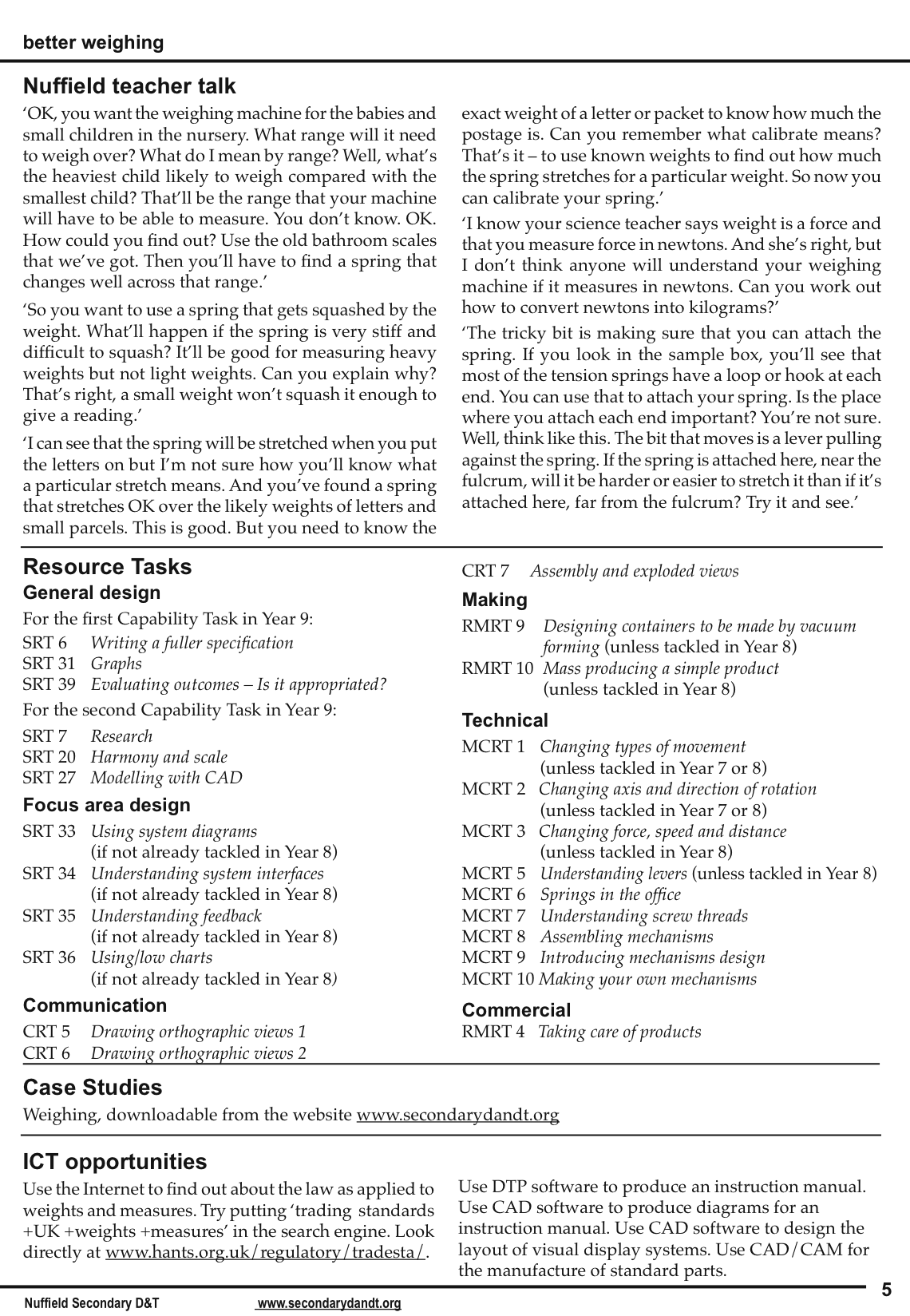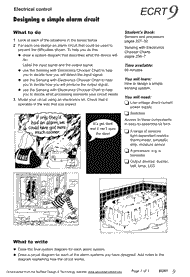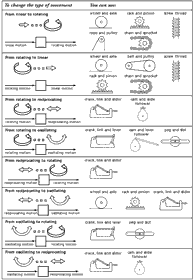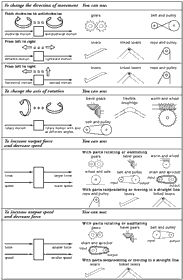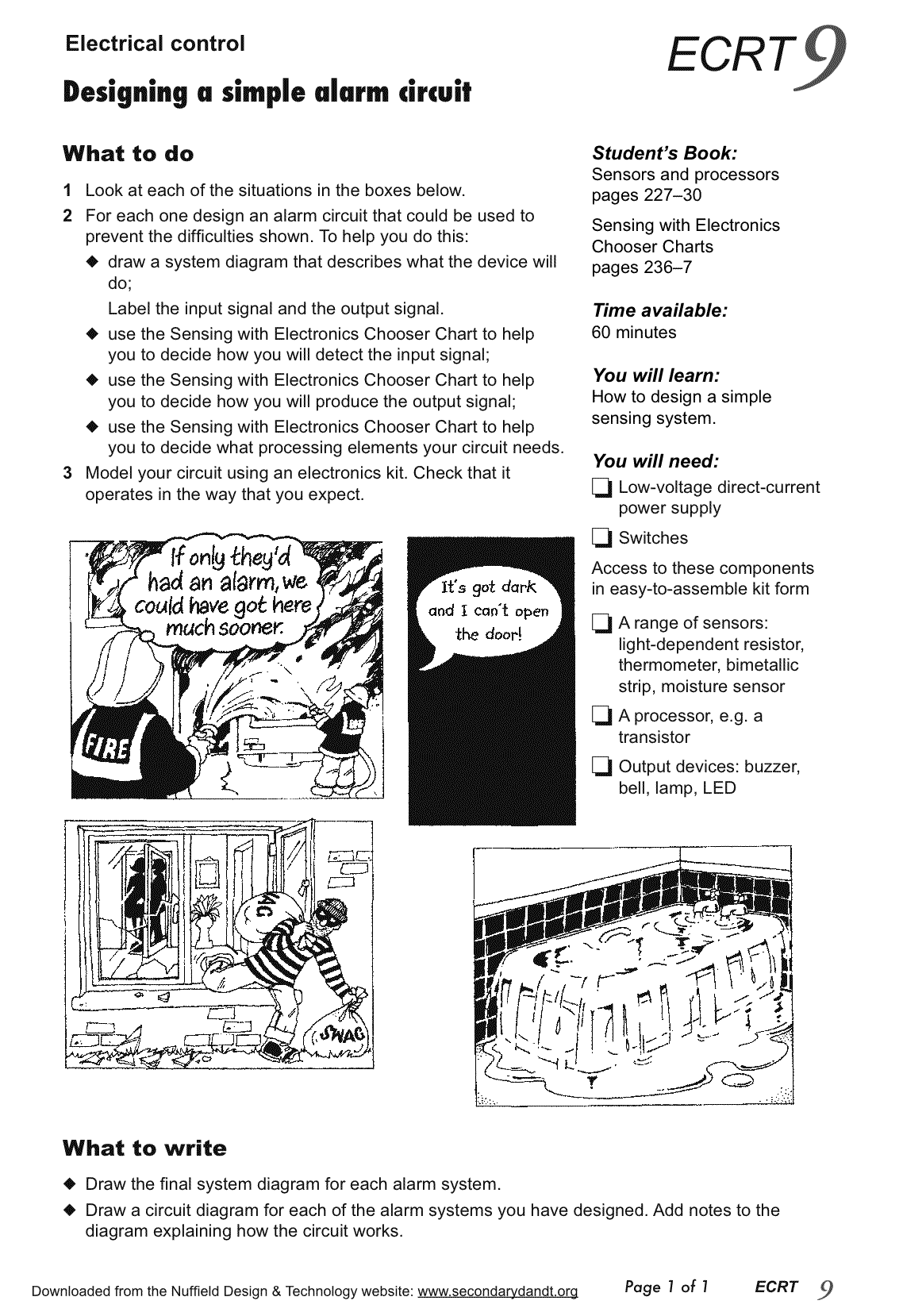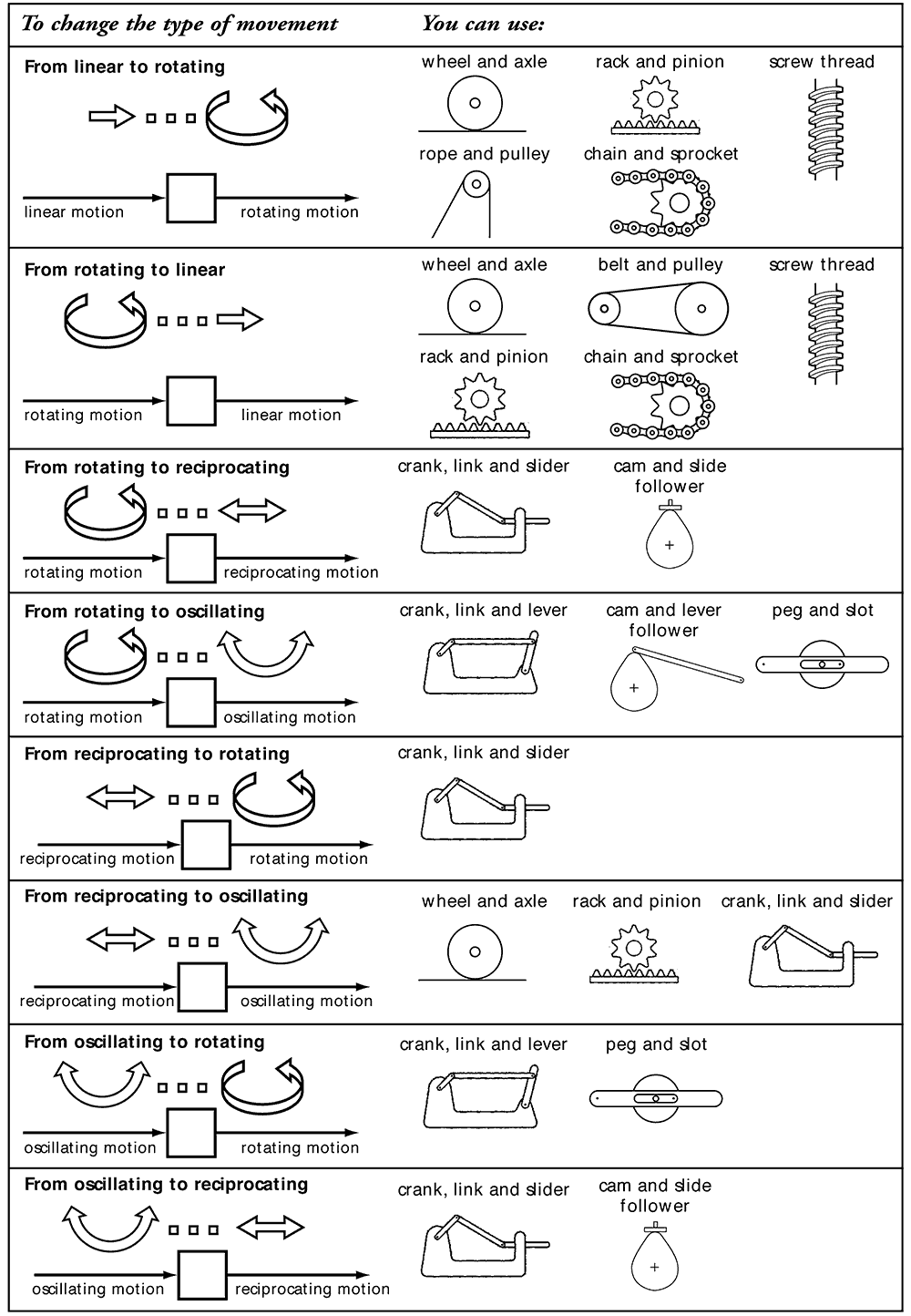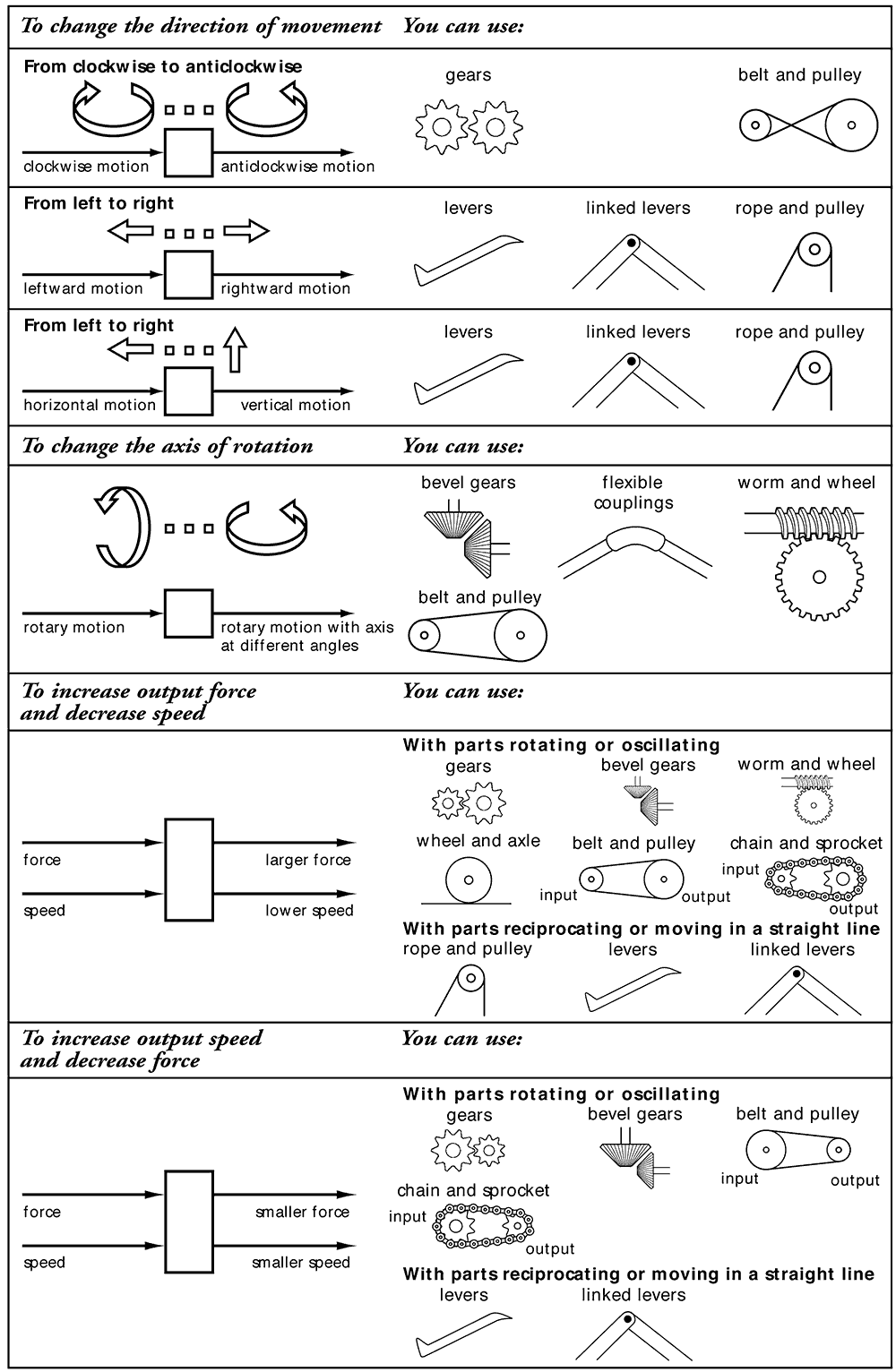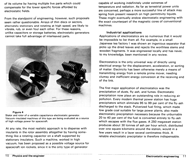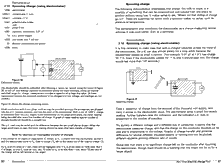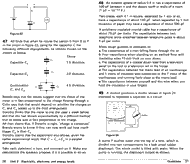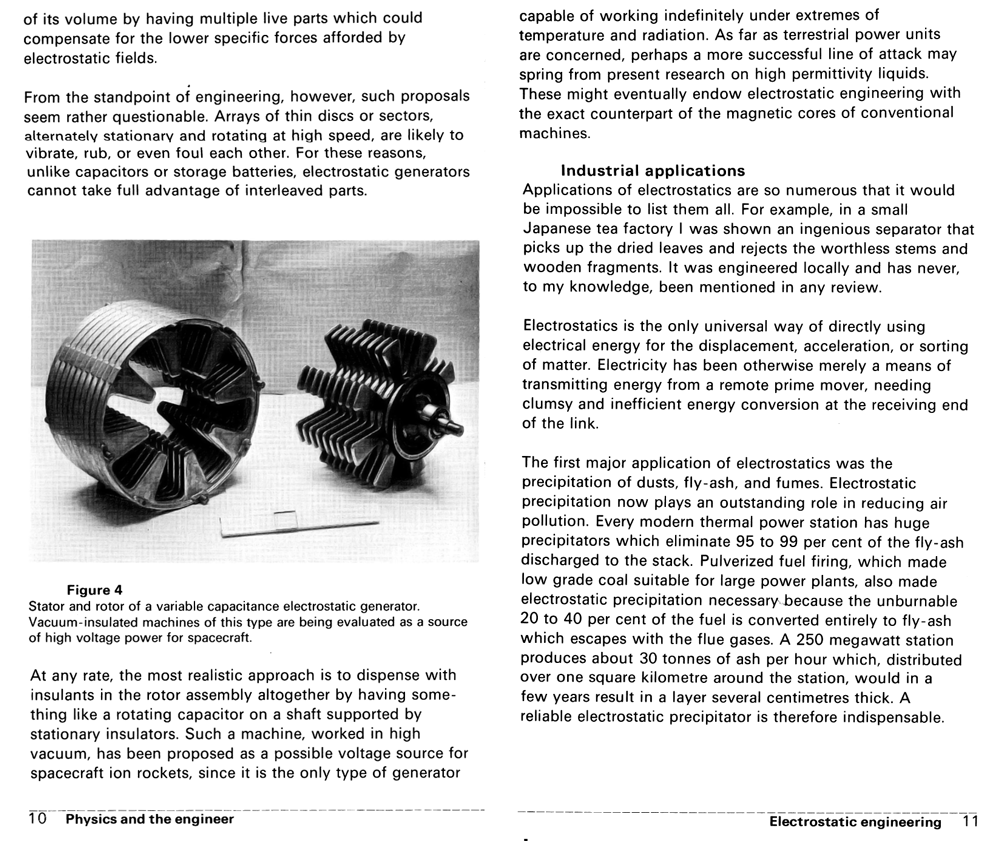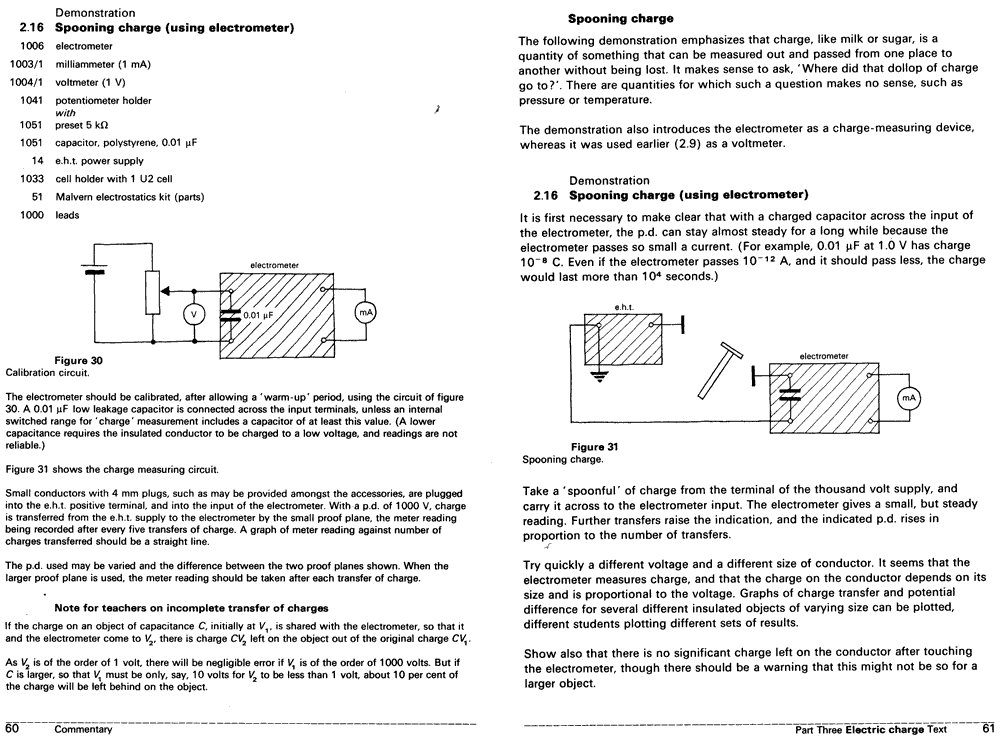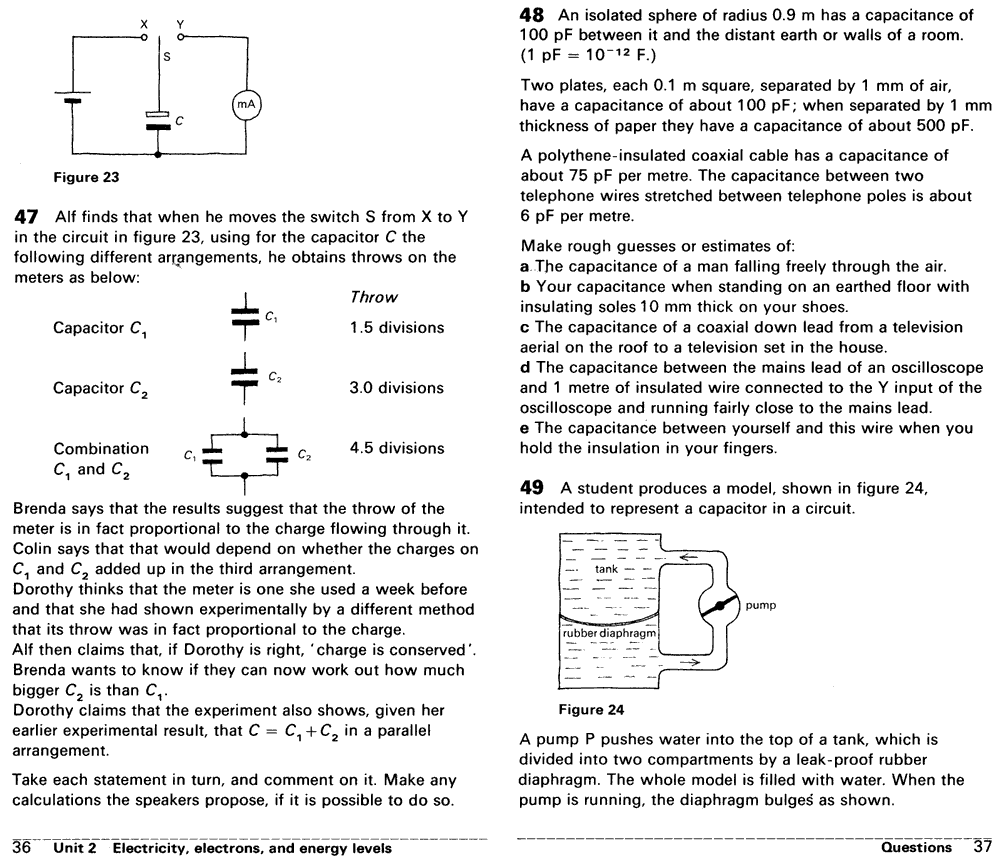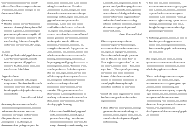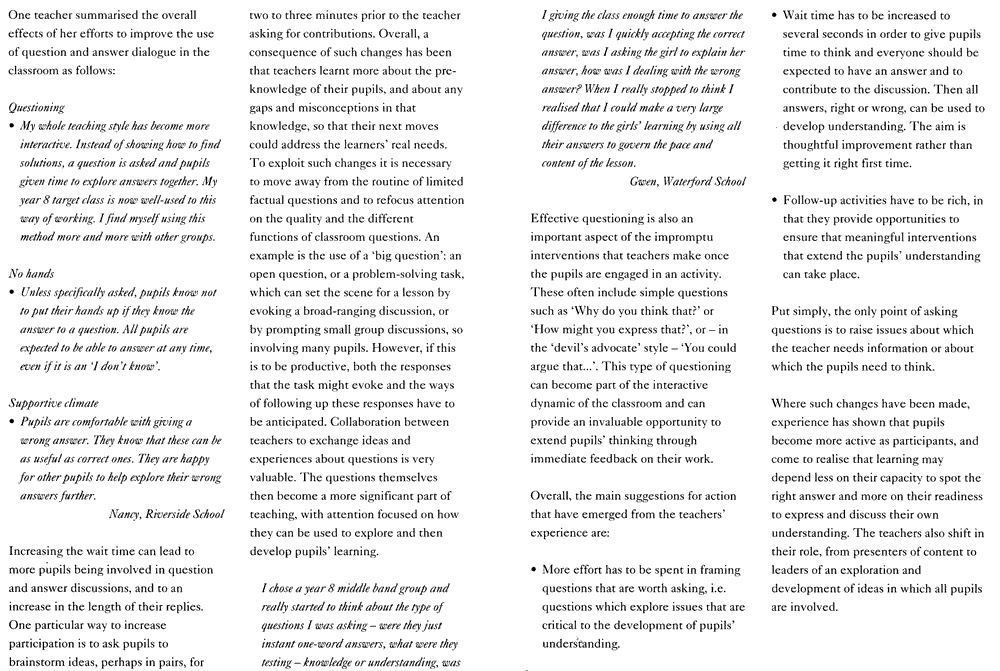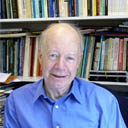
Strategic Decisions: Ambitions, Feasibility and Context.
Paul Black
King’s College London
Abstract
1
The main aim of this paper is to identify some of the main issues which call for strategic decisions in the early stages
of designing new materials. I do this by giving short accounts of four different innovations in which I have been personally
involved, and then, in summary, comment on how these indicate both the complex interplay of five issues – research basis,
curriculum, assessment, pedagogy, and sustainability – and how, according to the contexts, some might be left alone and others
are crucial. It is argued that both successful implementation and long-term impact are crucially dependent on teacher change.
Introduction
2
Any production of new materials for education must be driven by a desire to change. The scope of that change can span a
spectrum from the radical, e.g to completely reorganise the structures and systems of schooling, to the almost trivial, to e.g.
produce a more attractive textbook similar to that of publisher A to be marketed as a rival by publisher B. Thus, one of the
questions which I want to address here is “How far can you go?” i.e. how far should the move towards innovation be tempered by
practicality. The answer will require a review of the relevant constraints and affordances. The list of issues to be considered
is formidable. Two of them, the power to attract resources to design and produce and disseminate, and the resource of expert
people to do the work, I shall only consider marginally. Another, that of leverage, i.e capacity to attract publishers, to
convince those who control teachers, the power to convince teachers to use the material, the likelihood that teachers may be
able to use them to good effect (aka ‘the teacher-proof material’ syndrome), will be more salient in the discussion.
What I take to be obvious is that any new materials are but one component in a systemic reform, and the many features of
the context in which the materials will be planted and nourished have to be appraised in the initial planning of the work.
There are obvious examples of the risks of neglecting the context: the teaching approach required to use the materials may turn
out to be too challenging for most teachers, or statutory requirements of high-stakes testing might not reward the aspects of
learning which the materials were planned to promote.
In this paper, I shall develop a view that the strategic approach to design of educational material should focus on five
main issues, namely research, curriculum (C), assessment (A) pedagogy (aka instruction) (P), and sustainability.
The close inter-interrelationship of three of these, C, A and P, requires a preliminary analysis. The curriculum,
whether centrally prescribed, or implicit in the practice and culture represented in textbooks, is seen as a list of things to
be taught, and which the teacher may ‘deliver’ by a pedagogy that he/she thinks appropriate. In most systems, assessment
becomes the lens through which the curriculum is interpreted; this interpretation may depend on the appraisal of the aims of
the curriculum that the test-system and its controllers adopt for their work. Such an interpretation may be benign, in that
their instruments reflect and reward powers to understand and apply, or malign because it reflects a view of the curriculum as
a collection of things to be known, with assessment recording mere recall, thereby constraining the pedagogy to
‘teach-to-the-test’, rather than to the original curriculum aims. The strategic choice for the designer of new materials is to
anticipate how they will fit into the existing equilibrium between C, A, and P, or perhaps to seek to change this to create a
more favourable environment.
I propose to explore this framework in the spirit of ‘notes towards a theory of ’ rather than in one of defence of a
definitive theory. I shall pursue this exploration by discussing four cases of innovation, in which I have been personally
involved, in order to show how they illustrate the differing priorities of the five issues. My main reason for choosing these
examples is that the differences between them are such that they might illuminate the diverse complexity of the issues, and at
the same time I know them intimately because I was involved in all of them.
Because this paper aims to consider the strategy rather than the details of design implementation, it will not discuss
design at the level of the actual design of the various artefacts produced, such as printed pages. Whilst effective design at
this level is a necessary condition for eventual quality, it is not a sufficient one, and it cannot redeem a design for which
the strategy has serious flaws.
Research-based materials: developing primary school science.
3
This work started from a concern that this area was weak despite several past attempts to give it a strong base. An
underlying reason was that development was trapped between two inadequate approaches (Black, 1980).
One was to conceptualise primary science as a diluted version of high-school science, whilst the other was to propose
activities which might engage young children in general reasoning skills, but developing thereby a content-free ‘process’
science. As Wastnedge put it ‘At present we must concern ourselves more with how children learn than with what they learn’ (2001 p.50).
To escape this trap, the vision was to design activities which would challenge children’s thinking and help them to
develop some of the elementary insights which might serve as a basis for high-school science. To inform this vision, a research
project was set up to explore the ideas about the natural world which children might already have. An example would be in the
study of light, where children might first identify the various sources from which light comes, and then, through activities
with torches (flashlights) and mirrors try, as they draw pictures of what is happening, to explore the different ways in which
light may be represented on paper. The most ambitious of the targets was to help children realise that we see only by the
effect in our eyes of the light which enters them from outside (Osborne et al.1993). The outcome
was a set of data, evidence about the effectiveness of interventions based on them, and proposals for the elementary levels of
conceptual development which might serve as a basis for the future learning of science (Black and
Harlen, 1993).
On the basis of this work, funding and support from publishers was secured for writing and trialling new materials with
selected teachers. Whilst the weakness of the science education of most primary teachers was a well-known problem, here, the
nature of the activities and concepts was such that the new training in science which was needed was modest. The sole proviso
was that when children raised unexpected questions which they were not equipped to answer, which would be bound to happen,
teachers would have to admit this but perhaps use such questions as issues for discussion - e.g. asking “How could we test that
idea?”.
The outcome was two sets of booklets, one for ages 5 to 7 and one for ages 8 to 11, with 11 for teachers and 11 for
pupils in each set. At the time when these materials were being written, the future national curriculum was just coming over
the horizon in England, and high stakes external tests were not established. The guides for teachers (Nuffield
Primary Science 1993) were able to include links to the first version of the national curriculum for science, and second
editions referred in more detail to the revised 1995 version. Built in to the activities set out in the teachers’ guides were
suggestions for pupils to express their ideas in drawings and writing (Figure 1), and
the guides contained samples of such work to help teachers judge such products in relation to the national curriculum levels of
achievement. Thus, for example, the booklet on materials for 5-7 year olds included a page presenting a well-known children’s
story about a ginger-bread house, at a simple reading level and with coloured pictures, but then asking children what would
happen to this house if it were to rain. This was followed by a closer look at a real house (Figure 2).
When it was clear that the 1998 national curriculum was to be revised again, further development of the publications was
halted, because of the uncertainty about the outcome. New statutory written tests, to which the materials were not aligned,
were externally set and marked, the status of the assessments by teachers of any practical work was down-graded, and the
addition, in the late 1990s, of a new stress on literacy and numeracy, with national prescriptions for teaching methods and
testing goals for these topics, all served to undermine the priority given to science education (Harlen,
2007). Thus the innovation did not survive, and no comparable project has emerged to serve the changed context. Yet a recent
review of materials for teachers about young pupils’ misconceptions in science, advised:
Probably the most valuable source is the Nuffield Primary Science Teachers’ guides (Dabell et al. 2006, p.137)
Inventing a new subject - Design and Technology in England’s national curriculum.
4
This field of study has been represented by a patchwork of subjects in the school curriculum, and its definition varies
widely between different national systems (Black, 1998). An integrating rationale for the field was
proposed by Black and Harrison (1985) who argued that technology was a field of practical action
aimed at meeting human needs, and would require inputs from a variety of resources rather than those provided by any one school
subject. The diversity of relevant subjects, such as home economics, craft design and technology, art and design, engineering
studies, and so on, meant that this vision had implications for curriculum planning. Two projects then explored ways in which
several models of cross-curricular work might be implemented in schools (Black et al. 1988; Murray et al. 1994).
The 1998 national curriculum designated Design and Technology as a single compulsory subject, but the inherent problems
with this new subject are illustrated by the fact that it was not until 1995, after six years of confusion, that an acceptable
specification for the national curriculum was settled (Barlex, 1998).
During this period, a Nuffield Project was designing and producing materials for teachers, which both came to help
teachers and also helped the formulation of the new statutory specification. Central to this subject was the concept of
practical capability, with two dimensions expressed by the Project as follows:
Capable pupils can design what they are going to make and make what they are going to design
The aim was that pupils would be led to think about the made world and about how they might intervene to change it.
Very few teachers had any experience of this new approach and the reports of the national inspectorate about the early
implementation were very critical. Our analysis was that the requirement – that hitherto independent teachers were to teach
this co-ordinated subject – raised problems about collaboration, ownership, status and consistency, problems about how to
realise its unifying aim in a set of concrete activities, and problems about whether and how printed curriculum materials could
help a style of learning which should focus on practical activity.
The solution was a set of novel materials. At the core were two ring-binder files. One contained specifications of
‘Capability Tasks’ — 24 in all for the first three secondary years (Figure 3a, Figure 3b). Ideas were collected from many sources, a criterion being that any task would have to call for and help develop
practical ‘design and make’ skills, and to require techniques of as high a level of sophistication as schools could reasonably
manage. Each task had to be open to a variety of solutions so that there would be opportunity for students to develop
creativity. A typical task might require students to design and make a “cool” hat for a teenager, or a buffet meal for a small
party, or a work station for a pupil’s bedroom.
This collection of tasks was large enough to allow teachers and students to exercise choice. However, it needed other
supporting materials to tackle the problem that, given freedom to choose, pupils would not even think of using techniques of
which they were ignorant. The solution was a second file ring-binder file containing 144 ‘Resource Tasks’ for the first three
secondary years (Figure 4). Each task presented a realistic problem, so specified that
certain techniques had to be used, and so would be learnt in the context of a particular product serving well defined purposes.
Any such task could be tackled before, or in an intermission during, any Capability Task which might require it. This two-level
approach worked well - and it became a requirement when it was eventually adopted in a revision of the National Curriculum.
However, further under-pinning was required. Any student might need specific information about, for example, properties
(of metals, wood, plastics, fabrics and foodstuffs); techniques of cutting, shaping, joining, and treating different materials;
techniques for electronic or pneumatic control systems; advice about various approaches to design; advice about product
evaluation, and so on. A suitable resource had to be accessible to pupils from age 11 upwards. The potential range of content
was enormous, but affordability and accessibility called for a text of limited length. Brevity and intelligibility were
attained by very smart use of diagrams and tables, with a minimum of text in simple language (Figure 5a,Figure 5b). Given the novelty of the subject for teachers it seemed
essential to address pupils directly, without providing a conventional text-book: so this Student’s Book explained to pupils
how the activities — Capability and Resource tasks and the materials in the book, — aligned with the requirements
of the National Curriculum.
A second book, the Student’s Study Guide, was in two main parts. One was a set of Case Studies of fourteen examples of
design and technology developments, describing for each the design, manufacture, marketing, selling and impact of the product.
The other gave guidance to pupils about the nature of the subject, about how to use resources from other school subjects, about
what it means to ‘get better’ at the subject, leading to advice about how to assess one’s own progress. The strategic aim here
was to help develop pupils’ autonomy in becoming learners of design and technology.
The final component was a Teachers’ Guide, which served as an explanation of the philosophy of the subject on which the
materials were based, together with a navigation guide – with enough details for new users. With the help of an extensive
scheme of in-service training, the publications achieved status and success. About 2,000 copies of the two task files were
sold, suggesting that, since only one copy of each was needed per school, a third of all secondary schools had bought them. The
Student’s Book has sold over 50,000 copies and is the only publication still in print, whilst the Student’s Study Guide has
sold about 20,000 copies. The two files and all of the other materials, apart from the Student’s Book, are freely available on
the web (Nuffield Design and Technology, 2008).
A detailed description and evaluation of the material was published by Givens and Barlex (2001):
one of their findings was that only the most successful schools saw the need for, and made use of, the Student’s Study Guide. A
most significant problem was that the four main constituent areas, namely Food, Textiles, Resistant Materials and Systems and
Control, were usually taught by four different teachers, with pupils rotating between them in a carousel model, so that a
coherent system of progression in the subject was hard to achieve despite the emphasis on these aspects in the Student’s Study
Guide and the Teacher’s Guide.
Nuffield A-level Physics: systemic reform in a friendly environment.
5
The origin of this project lay in concerns, both in the U.K. and the U.S.A., about the state of science education (Jenkins, 1979), and about cold-war threats linked to the shortage of scientists (Rudolph, 2002).
Such pressures encouraged the Nuffield Foundation to set up reform projects, first in the science courses for all secondary
pupils, and later for the A-level sciences. (After age 16, students in England aiming at university entry spent a further two
years in advanced A-level courses, in specialised study of only three subjects).
The aims of the course were outlined as follows :
The construction of a course is itself a piece of engineering, a job to be done despite inadequate
knowledge of how some of the basic components in the learning process work. We have conceived the task as one of weaving topics
together to make a connected story which makes sense and arouses interest in its own right, which has discernible themes and
connects these in fruitful ways, and which at the same time serves these deeper aims of learning in the future, of
understanding physics, of understanding how physics works, of learning to inquire oneself, and of seeing applied and social
implications.
p.303, Black and Ogborn, 1970
This challenged the existing norms of both curriculum, pedagogy and examinations. The course was designed as a sequence
of ten topics, each drawing on the work of its predecessors, with the final topic serving as a grand finale, drawing together
many of the concepts developed in the earlier topics. This was physicists’ physics, reflecting, in its web of connections, one
of the most compelling features of the subject. Other topics led in different directions, principally to explore technological
and social effects of physics.
One key feature was the need to introduce topics not previously studied at A-level. This called for ‘pedagogic
transformation’, i.e. ways to present ideas, previously considered too demanding at this level, to make them both authentic and
intelligible. For example, a new way to teach the second law of thermodynamics involved consulting the different approaches in
many sources (Ogborn, 1978), then setting up a new approach, requiring new methods and visual aids (Black & Ogborn, 1978; Black et al. 1971, 1972), then checking with
several university physicists that the approach was authentic.
For the pedagogy, a core aim was that students should become independent learners. So the final publications did not
include pupil textbooks, a feature which worried publishers and many teachers. There were detailed guides for teachers (Figure 7), and small booklets for students of background reading (Figure 6) and of
questions (Figure 8).
Teachers were asked to provide a range of existing textbooks for students to consult, the aim being to help students to
become less dependent on a sole textbook. Much of their learning was laboratory-based, with experiments designed to provoke
discussion rather than to ‘prove’ established results. In one topic, different groups conducted one each of a suite of
experiments, and then reported to a plenary in which all could draw together the full picture. All were required to do two
small independent investigations, each taking two to three weeks, with the second being teacher-assessed to contribute about
10% of the A-level examination.
Both the integrity of the course and the interests of the students called for development of a new A-level examination.
To validly reflect and support the aims of the course, a tailor-made set of six instruments was developed as follows :
- a multiple choice test;
- a test with a set of short, structured questions each calling for a set of short answers;
- a test offering a choice of essay-type questions;
- a passage about a topic not in the course, with questions assessing understanding of it;
- a practical test composed of about eight tasks using laboratory equipment;
- a report on an individual open-ended experimental project, assessed by the teacher.
Entry to university depended on the results of A-level examinations and acceptability of the results of this examination
had to be secured in negotiations to establish that it would lead to a qualification which would be recognised and accepted
beyond schools, notably by university admissions officers (Black & Ogborn, 1977).
There were numerous other aspects to the engineering, e.g involving schools who would trial the course, equipment
manufacturers, publishers, teacher trainers, school district authorities, and the funding agency. One example will illustrate
the complexity of the advanced planning required: trials of the new approaches in schools could not start until any novel
equipment was available, so manufacturers had to make it – so they needed to see working prototypes a year ahead of the trials,
which prototypes had first to be developed and tested: thus decisions about and development of such equipment had to be settled
at a time when the course was no more than a set of aims with mere outlines of the material to be written.
The success of the course depended on meeting all of these the multiple requirements. However, a key feature of the
context was the team’s freedom when the curriculum was not seen as an area for government control – the innovators were free to
innovate, and succeeded or failed by their power to attract voluntary participation. Governments in the UK allowed more freedom
for work at this level, in part because of their concerns about poor recruitment to those advanced studies which lead to
qualifications in science and engineering.
The materials were revised and re-printed after a few years, and at this point it was decided, under pressure from
publishers and schools, to produce a pupil textbook. The new materials had significant effects on the development of many
conventional syllabuses and text-books. The course and its special examination continued for over 25 years until a quite new
course, Advancing Physics (Ogborn, 2003) replaced it.
Formative assessment: materials to support only pedagogy
6
This particular piece might seem a surprising inclusion here. It did not produce either curriculum or assessment
materials: it was solely about pedagogy. Yet by any standards it has been influential, producing a very widely cited research
publication, two booklets for teachers — each of which has sold over 50 000 copies — and a book which has been a
‘best-seller’ according to both the publishers and Amazon. What makes it relevant here is this sharp contrast with the other
examples.
The work began with a review of research evidence about the nature and effectiveness of formative assessment (Black and Wiliam 1998a). This showed two outstanding features, one being that there was strong evidence that formative
assessment practices did produce significant enhancement in pupils’ attainment, the other that these practices were not to be
seen in most classrooms. We decided to highlight this message, by a booklet addressed mainly to teachers, but also to
policymakers and others. The key feature here was to make the message short, assertive and as simple as possible. This was done
with a 20 page A5 booklet (Black and Wiliam 1998b). About half of the text presented a digest of the
evidence, whilst the rest made a series of recommendations about what action should follow (Figure
9). A press conference served to attract publicity and requests for copies and talks to meetings soon followed.
The second phase of activity was to set up a project to tease out how the evidence might be used to change the pedagogy
of teachers. Teachers in six schools, about 40 in all, accepted invitations to work with us in turning some of the ideas from
the research into classroom practice. We emphasised that research could not provide recipes for teaching - it only provided
ideas which might suggest new approaches that teachers might incorporate in their own daily work; in so doing they would be
inventing new practical knowledge, not ‘applying’ research in any direct sense (Black & Wiliam, 2003).
A further feature was that the project was to explore such invention within the context of the existing constraints of
curriculum and summative testing in their schools, so that our concern was restricted to provoking and evaluating changes, and
supporting the teachers - mainly by providing feedback from observing their teaching and also by providing regular project
meetings, one every five weeks over two years, in which they could all meet and share experiences.
One outcome was that test scores, on the normal tests that were being used in their schools, were significantly higher
that those of comparable control classes (Wiliam et al., 2004). Another was that the teachers
expressed strong satisfaction with the changes in their own work. A third was our finding that such changes took time. Indeed,
after one year of work in which the teachers had been happy to be involved, our classroom observations showed that little had
changed. It was only in the next six months that the project ‘took off’ in that teachers were now teaching in different ways.
We could then produce a second short booklet and a book for teachers (Black et al. 2002, 2003), in both of which we made extensive use of quotations from the written reflections of the teachers.
The core activities developed and promoted here were at the heart of the ways in which teachers interact with their
students, whereby they elicit and then respond to students’ own thinking about ideas central to their learning. Such
interactions could occur in oral dialogue, the minute by minute exchanges in a classroom, or in the more measured composing of
guidance in responding to students’ written work. Both require a shift of orientation, from framing responses as grading or
judging, to making them serve, and be seen by students to serve, as guidance to respect, yet challenge and improve, the
learner’s thinking about the tasks that the activity had revealed. This could enrich the teaching of almost any curriculum, and
is in principle quite separate from the long-term checking up of assessment of learning.
However, widespread dissemination has involved dilution to the extent of undermining the idea. Adoption has been
superficial by many who do not grasp that behind the surface tactics lies a need for most teachers to re-think their beliefs
about, and personal role, in students’ learning. The use of the title ‘Assessment for Learning’ as a simpler alternative to
‘Formative Assessment’ has not helped, and both in the USA and in recommendations of the government in England this title has
been applied to regimes of frequent summative testing, which the original evidence for formative assessment does not support.
Reflections and conclusions
7
It is not easy to distil common themes from these examples because of their diversity. What I want to suggest here is a
set of strategic questions which must be answered in the first stages of designing educational materials, using the four cases
to illustrate a range of answers.
What research evidence is needed – and is it available ?
For Formative Assessment, the research evidence was the essential starting point, both by showing its potential to
improve attainment, and in developing ways to realise this potential. Research also provided an essential basis for the Primary
Science in helping to develop activities which would be both feasible and effective in securing its aims. Design and Technology
called for a new configuration of curriculum topics, and whist some relevant research basis was being developed, the project
had to move rapidly into practice because of national legislation. The A-level physics, being less radical and looking to
evolution of existing good practice, did not need a new basis in research evidence.
Is the curriculum an established constraint – and is it likely to change?
This dimension was irrelevant for the Formative Assessment example. The A-level Physics was pushing the limits of
existing curriculum norms, exploiting the curriculum flexibility allowed in its context to promote new aims. Such freedom was
not enjoyed by Design and Technology, for whilst it successfully helped to define the new subject, its development was dogged
by changes in the national curriculum specification. Primary Science established a new approach to the subject’s curriculum, in
a context which initially allowed freedom, but changed later in ways which made it unviable.
Does summative assessment provide an opportunity or a straitjacket?
This issue was marginally relevant to the Formative Assessment, in that the evidence that it could lead to higher scores
on existing tests helped make it attractive to teachers. Whilst the A-level Physics had freedom of manoeuvre to compose a
summative assessment system that supported its aims, the Primary Science innovation did not formulate a summative assessment
system, and when such a system was imposed, it became hard to sustain. For assessment of Design and Technology, the national
requirements were not unhelpful, in that emphasis on teacher assessments of pupils’ design-and-make tasks was acceptable.
What style of classroom pedagogy is intended and how is it to be achieved ?
One aspect here is evident in Primary Science, which faced the obstacle that nearly all of the teachers lacked
confidence in their knowledge of the subject, so that they felt unable to cope with the imaginative questions that their pupils
might raise. Hence, the guides for teachers had to be supplemented by a book about the science itself, whilst explicit texts
for pupils were also essential.
Design and Technology faced a similar problem in that being new, the collegiality and shared culture on which
established subjects could draw did not exist: teachers of diverse experience had to forge a new identity. Here there was a
clear need for materials for teachers to support them with guidance about the rationale of the course and about the way in
which the materials reflected this rationale, with a unified approach across the various topics which would be taught by
different teachers. But there was an equally strong need to have a rich set of materials speaking directly to students to
complement this support. At the same time, because of the distinctive nature of the work, conventional textbooks would be
inadequate. The combination of files of capability and resource tasks, with small books that provided ‘craft resources’ and
background information, met the need.
The A-level Physics project also had problems, for it both presented novel topics and called for big changes in teaching
practices. Many teachers who found the new content attractive showed, in trials, that they had not grasped that the new
practices required radical changes in their teaching style. The publication of a pupils’ book for the two very new units was
essential, yet the other eight demanded a new style and a new articulation of the unusual resources: the change to more
conventional pupils’ books at the first revision may have been inevitable.
Pedagogy was the central concern of the Formative Project: promoting teacher change in this dimension was the focus of
its work. It succeeded with its design challenge of achieving texts which combined brevity, clarity, practicality, and, through
the use of teachers’ own writing, credibility.
Designing for sustainability?
It is inevitable that new educational materials may either become non-viable because of changes in the national context,
or decline in popularity as they are replaced by later novelties. Their success may then be measured by the extent to which
their ideas are incorporated in rival materials – imitation being the most sincere form of flattery.
Whilst it is hard to see how design can, or even should, make materials less fragile to such changes, it is likely that
the survival of their most valuable features will eventually depend on these becoming part of the valued practice of teachers.
They will achieve their common aim, of engaging pupils in successful learning, insofar as they can enhance the essential
determinants of successful learning, the quality of the close interaction between teacher and pupils, and between pupils
themselves, and thereby expand the capacity of the teacher to work creatively with the ways that pupils respond to the tasks
and challenges set before them. My Formative Assessment example is particularly significant for it is only by working to
challenge and so help develop these crucial features that teachers can promote learning in any innovation. So the question for
the designer to face is: what types of teaching and learning activity do you envisage, what theories, of learning and of
pedagogy, provide warrants for your choices, and in what ways do your products help such activity to happen?
Any set of materials must match and support the classroom work of teachers, but many under-estimate the difficulty of
achieving teacher change, and it is in this dimension that the design of any materials becomes a central and subtle issue. One
element which these four had in common was to take seriously fundamental aims in learning, aims to which none could object but
few seemed committed to achieve in practice. It is a well documented finding that achieving teacher change is slow steady work
(Schulman and Schulman, 2004) – to imagine that a short in-service course will be enough is
usually a fantasy. The most subtle task of designers is to catalyse such change, within any materials, through work on the
context in which they will be used, and through sustained support for the teachers who are translating their aims into
practice.
References
8
Black, P.J. & Ogborn, J.M. (1970) The Nuffield advanced physics course. Physics Bulletin. 21,
301-303.
Black, P., Harrison, C., Lee, C., Marshall, B. & Wiliam, D, (2003) Assessment for Learning– putting it into
practice. Buckingham: Open University Press.
Diagrams
9
Figure 1: Page 11 from Nuffield Primary Science Teachers’ Guide
Key Stage 1: Materials. London: Collins 1993..
Figure 2: Page 9 from Nuffield Primary Science Pupils’ Book
Years 3-4: Materials London: Collins 1993.
Figure 3: Pages 3-4 Nuffield Design and Technology Key Stage
3: Capability Task File Weighing. London: Longman. 1995
Figure 4: . Page 9. Nuffield Design and Technology Key Stage 3:
Resource Task File Alarm Circuit. London: Longman. 1995
Figure 5: . Nuffield Design and Technology Key Stage 3:
Students’ Book: Chooser Chart. London: Longman. 1995
Figure 6: Pages 10-11 from N.D.Felici “Electrostatics and the
engineer” p.3-22 in Nuffield Advanced Physics Students’ Book: Physics and the engineer: Harmondswoth: Penguin 1973
Figure 7: Pages 60-61 Nuffield Advanced Physics Teachers’ Guide
Unit 2: Electricity, electrons and energy levels. Harmondswoth: Penguin 1971
Figure 8: Pages 34-5 Nuffield Advanced Physics Students’ Book
Unit 2: Electricity, electrons and energy levels. Harmondswoth: Penguin 1971
Figure 9: Pages 6-7 (2002) Black, P., Harrison, C., Lee, C.,
Marshall, B. & Wiliam, D.Working Inside the Black Box. London: GLAssessment.

